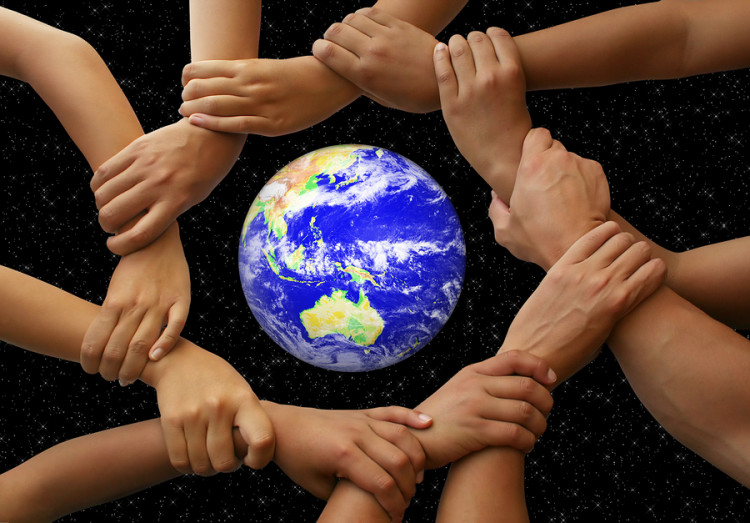Escaping the Dreaded National Middle-Income Trap: Noah Smith

published Sep 1st 2016, 1:37 pm, by Noah Smith
(Bloomberg View) —
In the age of colonialism, there were mainly two kinds of countries: empires that controlled their economic destinies, and colonies, which were denied the chance to industrialize. After World War II and the end of colonialism, a different divide emerged — many countries were trapped behind the Iron Curtain, held back by inefficient communist systems. Meanwhile, the capitalist countries — some ex-colonizers like Europe and Japan, and some ex-colonies like South Korea and Taiwan — zoomed ahead, while some former colonies languished in poverty.
Now, in the new globalized world, almost all countries are largely capitalist, and colonialism is a memory. As a result, poor countries have been catching up to rich ones, as basic economic theory would predict. That’s great news. But a new kind of divide might be opening up — the new have-nots may be the countries that get caught in the dreaded middle-income trap.
Middle-income countries are defined in two different ways — either in absolute dollars, or as a percent of the income level of some leading country like the U.S. In 2014, the World Bank defined middle-income countries as having per capita incomes of anywhere from $1,046 to $12,745. Some development economists, preferring a relative measure, defined it as between 20 percent and 55 percent of U.S. per capita gross domestic product. Both of these are very wide ranges — a country where people make $1,046 will barely be able to afford decent sanitation, while in a country making $12,745 a large percentage of families will own cars. But in general, the categorization is a fairly good way of saying that a country isn’t suffering from desperate poverty, yet not able to afford the luxuries enjoyed in more developed nations.
In recent years, some economists have raised the unsettling possibility that while most countries can climb into the ranks of middle income, it might be much harder to climb up to the top level. Here is a chart of how countries’ positions changed between 1960 and 2008:
Countries like Ireland, Israel, South Korea and Spain moved from the middle to the top, but these are relatively rare. A lot more countries, like Brazil and Malaysia, lingered in the middle region.
Is that a statistical fluke, or is something deeper going on? That question isn’t easy to answer, and it never will be. There aren’t that many countries in the world, so any statistical analysis is working with a small sample. On top of that, each country is different, so it isn’t clear that you can just directly compare them. To make matters worse, history — and the catch-up of poor nations to rich ones — only happens once. In fact, economists Lant Pritchett and Larry Summers showed in 2014 that in a world where growth trends are random, lots of countries will look like they’re stuck in a middle-income trap, even though no policy can get them out. There will always be the possibility that economists worried about the trap will be obsessing over something that no one can control.
But lots of development economists beg to disagree. They look at countries that have been stuck in the middle-income category for many years, and they find some similarities between them. In a recent review paper, Pierre-Richard Agenor surveys the economic literature on middle-income traps. His report should be required reading for policy makers.
Most poor countries become middle-class by a fairly familiar process — they move people from agriculture to cities, build a bunch of buildings and roads and machines, and begin manufacturing stuff. For countries without large amounts of exportable natural resources, that’s the tried-and-true path. But eventually it loses steam — the surplus labor from the countryside runs out, the economic return from building more stuff goes down, and it gets harder to increase productivity by imitating foreign technology.
So advancing to the top rank probably requires a shift in development strategy. One idea is innovation. Once countries reach a somewhat advanced level of technology, they may need to shift from copying foreigners to creating their own new ways of doing things. South Korea, Israel and Ireland made this shift effectively; Malaysia and Thailand, not so much.
Another strategy is to build human capital. As nations advance up the value chain, producing more valuable and complex products requires more knowledge and smarts. Improving education systems and attracting high-skilled immigrants are two ways to boost human capital.
Advanced infrastructure is a third strategy. Middle-income countries have roads and electrical grids, but to be a modern economy, you need broadband internet. Some of the papers Agenor surveys verify the importance of broadband.
Institutions, of course, may also be very important. Agenor suggests improving property rights and the rule of law, and also taking steps to reduce economic inequality — three common economist prescriptions.
In any case, as more and more countries escape the trap of poverty, the world is becoming more and more equal. But the middle-income trap is a big potential obstacle. It’s up to those countries to experiment and find out what works.
This column does not necessarily reflect the opinion of the editorial board or Bloomberg LP and its owners.
To contact the author of this story: Noah Smith at nsmith150@bloomberg.net To contact the editor responsible for this story: James Greiff at jgreiff@bloomberg.net
For more columns from Bloomberg View, visit Bloomberg view
copyright
© 2016 Bloomberg L.P



No Comment